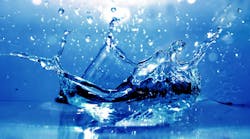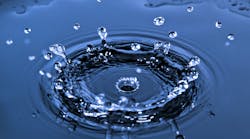WASHINGTON, DC -- The U.S. Department of Agriculture (USDA) Natural Resources Conservation Service (NRCS) has selected 31 priority areas to receive $13 million in Environmental Quality Incentives Program (EQIP) funding as part of the WaterSMART Initiative (WSI). These investments will help producers on private working lands better conserve water resources in coordination with investments made by water suppliers.
“Our farmers and ranchers are stepping up to the plate to partner with communities to gain efficiencies to better conserve our water supply,” said Kevin Norton, Acting Chief of NRCS. “Working with the WaterSMART Initiative allows us to make a bigger impact where it’s most needed.”
The priority areas are part of a collaborative effort between NRCS and the U.S. Department of Interior’s Bureau of Reclamation to modernize existing infrastructure and otherwise build drought resilience. The bureau’s WaterSMART programs, available in the Western U.S., work with states, tribes, and local entities to increase water supply. NRCS helps farmers and ranchers voluntarily address water quantity resource concerns and agricultural drought stress. By aligning investments through WSI, NRCS aims to improve water conservation and drought resilience.
"Reclamation works cooperatively with states, tribes and local entities as they plan for and implement actions to increase water supply reliability through investments to modernize existing infrastructure through the WaterSMART Program," said Bureau of Reclamation Commissioner Brenda Burman. "This partnership with NRCS maximizes the impact of each agency's program in conserving water and being resilient to drought."
An example priority area is the Arch Hurley Conservancy District in Quay County, N.M. The district used Reclamation WaterSMART funds to line earthen ditches with sodium bentonite to save 13,000 acre‐feet of water. With the additional NRCS assistance, farmers were able to improve irrigation systems and are expected to double irrigation water use efficiency, reduce water use by an estimated 200 to 300 acre‐feet of water, extend water supply during drought, and benefit downstream water users. In addition to the water-saving benefits, the EQIP funding will help them improve soil health, reduce erosion, and improve the amount and availability of crops.
A full listing of the priority areas is available on the NRCS website at www.nrcs.usda.gov.



